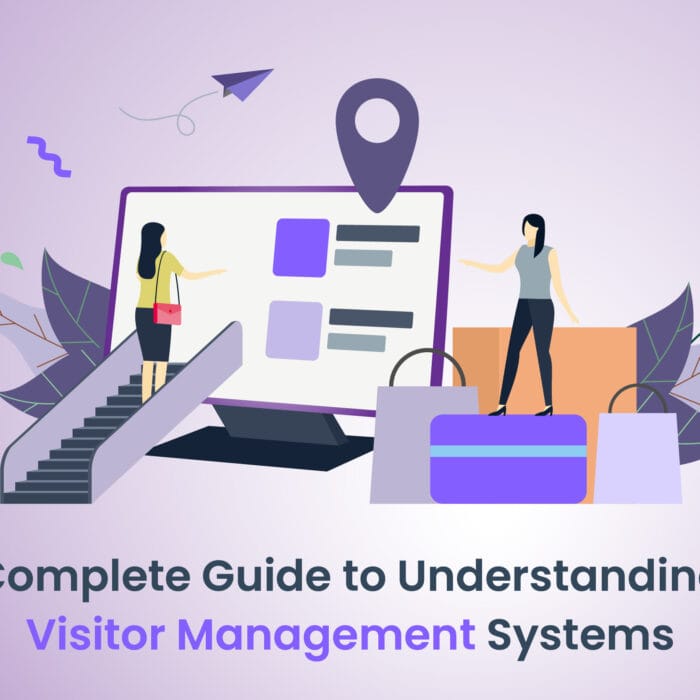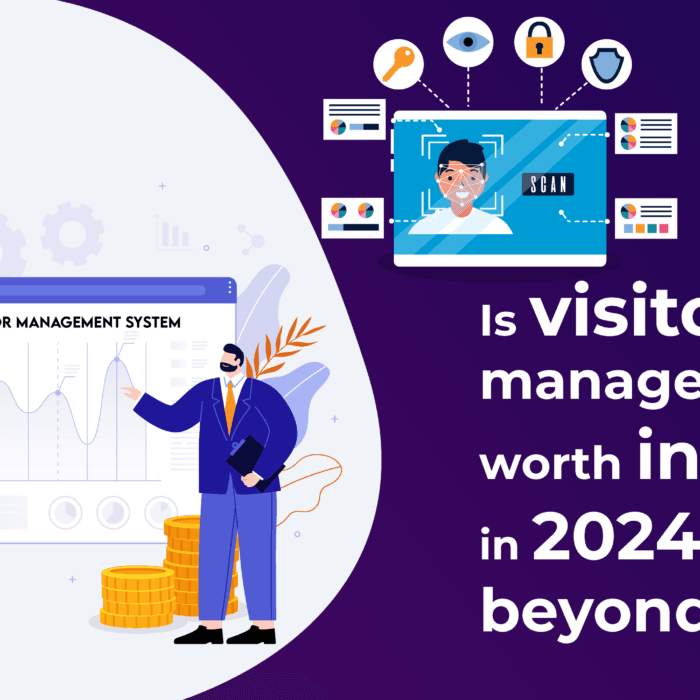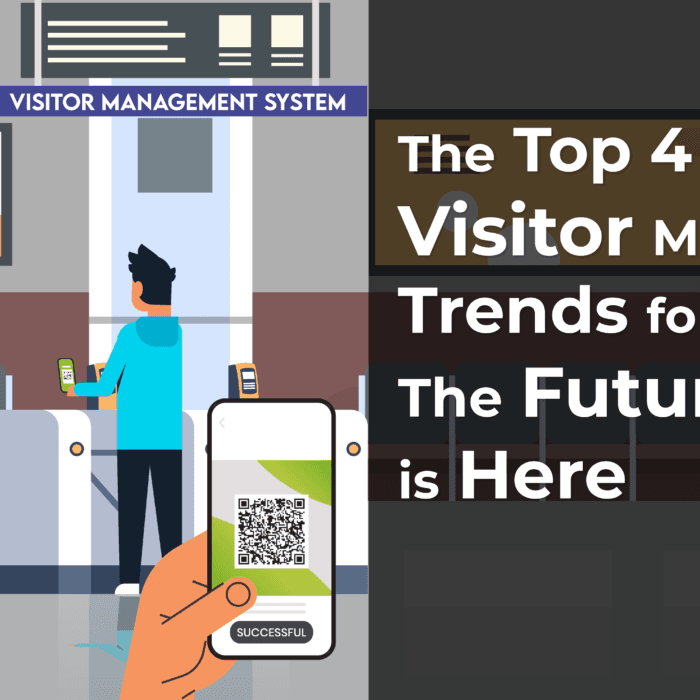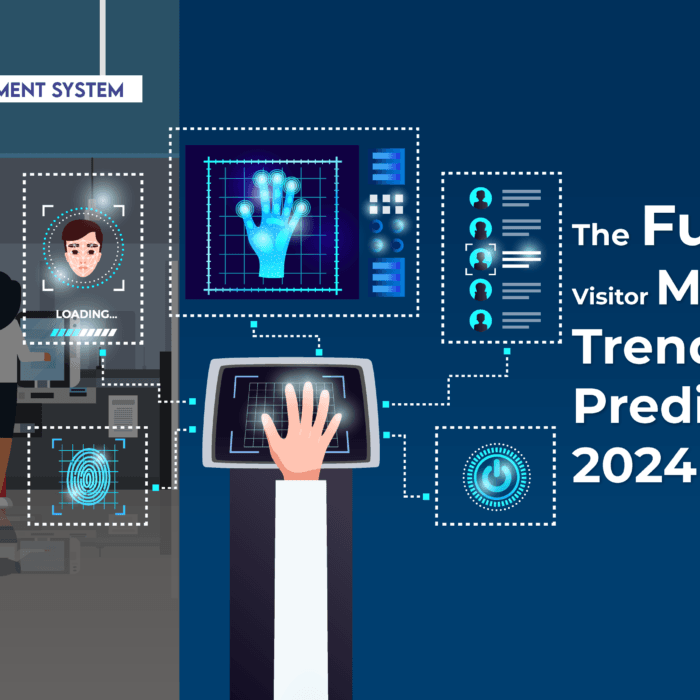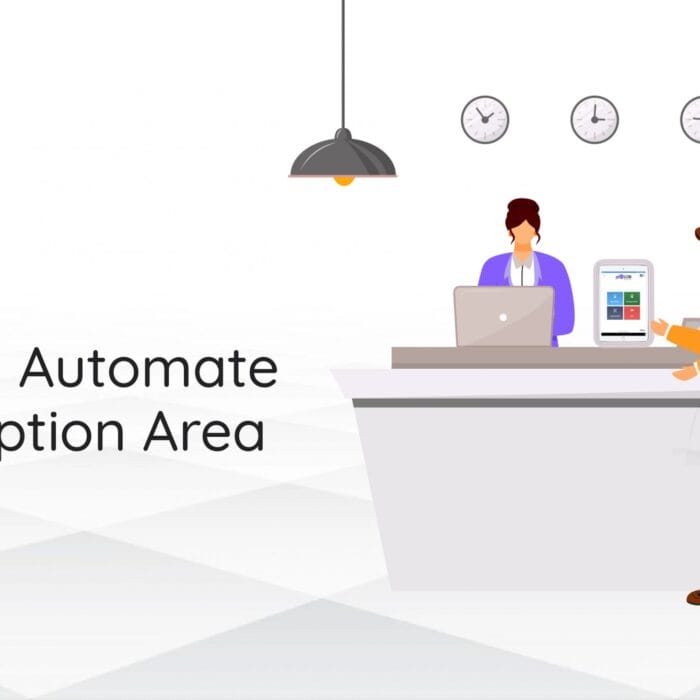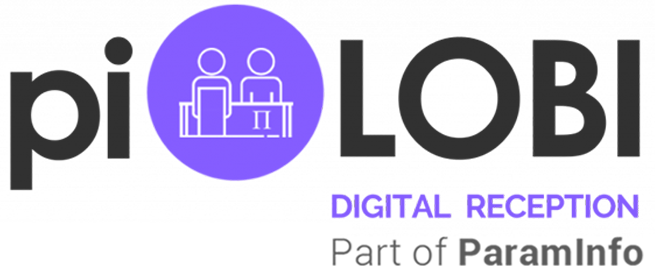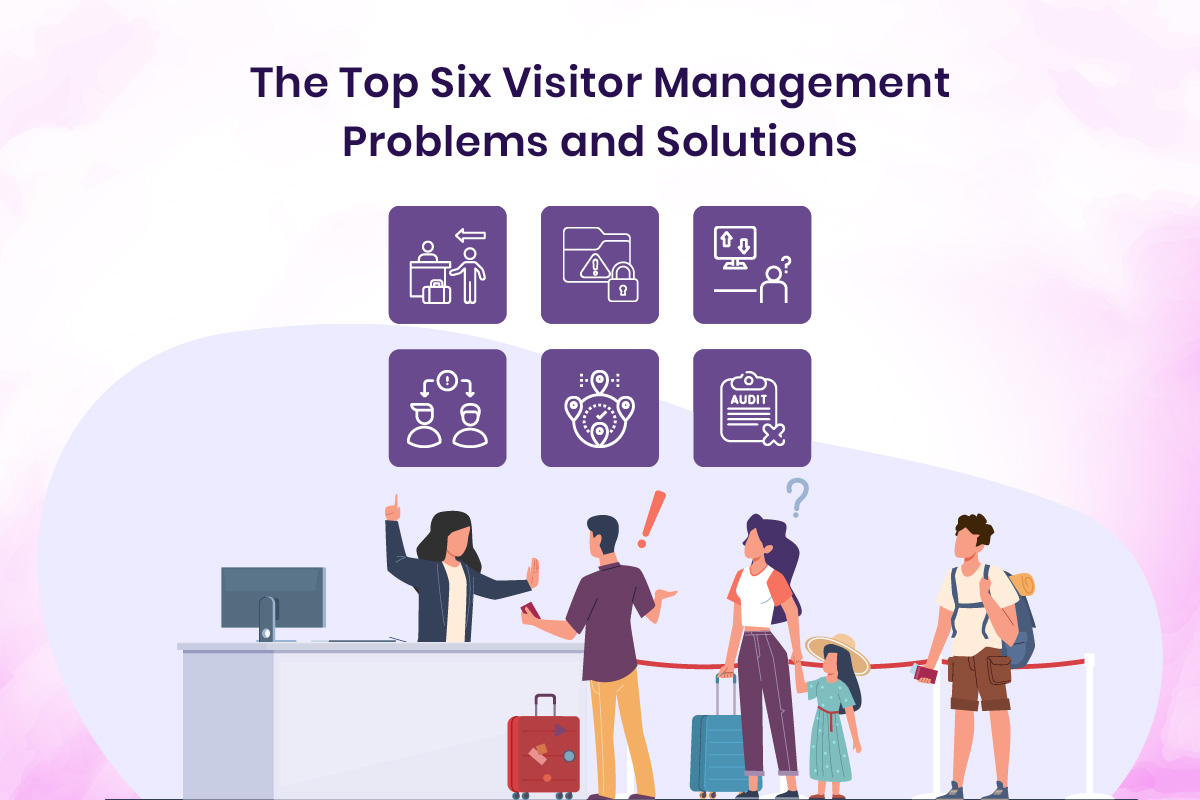
The Top Six Visitor Management Problems and Solutions
Handling visitors is a crucial aspect of running a business today. Organizations focus on maintaining their spaces as secure, professional, and efficient as possible. Whether it’s a busy corporate office, a shared workspace, a hospital, a school, or a government building, the way visitors are handled leaves a strong impression and also plays a big role in meeting safety rules.
Still, lots of organizations deal with regular problems in managing visitors. These issues can mess up daily operations and put security at risk.
This blog dives into the five most common visitor management problems and solutions and highlights some of the smart solutions that can help overcome them.
1. Manual Check-In Processes
The Problem:
Using traditional paper logbooks to check in visitors creates visitor check-in process issues. People often must write out forms by hand, which leads to slower check-ins and mistakes in the information collected. This wastes time, annoys visitors, and puts extra pressure on reception staff. It can also weaken overall security.
The Solution:
Switching to a digital visitor management system can fix these issues. Features like pre-registration, QR code scans, and quick badge printing make check-ins faster and more reliable. All visitor information gets stored in one system, making it easy to find when needed.
Simplifies check-ins by offering tools like QR code scans, early registration, and mobile sign-ins. Guests register ahead of time, cutting down on wait times and helping collect accurate details.
2. Lack of Secure Data Handling and Privacy
The Problem:
Handling visitor information is necessary in today’s digital world. Many businesses still keep personal data in risky ways, like on unprotected spreadsheets or open visitor logs at the reception. This can lead to sensitive info—like names, contact numbers, or visit purposes—being exposed or misused. Ignoring data protection laws such as GDPR or ISO rules can also bring serious legal trouble.
The Solution:
A safe visitor’s platform in the cloud secures visitor data by encrypting it and restricting access depending on user roles. Organizations can use it to automate how long they keep data and when to delete it, helping them follow privacy rules. With visitor registration process solution tools meeting global security standards, companies can safeguard visitor info, earn trust, and follow changing data protection laws.
3. Weak Visitor Monitoring and Recognition
The Problem:
Organizations fail to keep track of visitor movements after check-in without effective tracking tools. They lack a dependable method to find out who remains on-site, their locations, or their exit times. This poses significant risks during emergencies, inspections, or unapproved entries. Relying on manual records or spoken updates does not provide complete clarity about the situation.
The Solution:
A clever visitor tracking system that monitors activities in real time gives full oversight of visitor movements. Businesses can use tools like photo capture facial recognition, or ID scans to confirm identities and verify them before allowing entry. Combining these tools with access control systems helps limit access to authorized people, strengthening both security and responsibility.
4. Poor Interaction Between Guests and Hosts
The Problem:
Visitors and hosts often struggle to coordinate, which ends up causing delays at the front desk and confusion. In many offices, receptionists still rely on calling or emailing employees when their guests show up. This slows down meetings and leaves a bad impression of the company. In hectic workplaces, these communication breakdowns can mess up schedules and hurt productivity.
The Solution:
A modern visitor tracking system manages visitors and closes the communication gap by delivering quick alerts through SMS, email, or an app right when visitors check in. Hosts have the option to approve, adjust schedules, or send a greeting without being there in person. This instant communication improves how guests are handled, makes everything look more professional, and helps every visitor feel noticed as soon as they show up.
5. Difficulty in Managing Multiple Locations
The Problem:
For organizations with multiple offices or facilities, maintaining consistent visitor management across all locations can be a major challenge, and can create workplace visitor management issues. Each branch might follow different procedures, making it difficult to track visitors, enforce uniform security protocols, or access consolidated reports. This inconsistency not only weakens security but also complicates compliance monitoring and performance analysis.
The Solution:
A cloud-based, multi-location visitor management system provides centralized control over all branches. Administrators can define standardized policies, monitor real-time activity, and generate unified reports from a single dashboard. Whether your offices are across the city or around the globe, this system ensures consistency, transparency, and improved efficiency throughout your organization.
6. Compliance Challenges and Audit Difficulties
The Problem:
Manual visitor management systems often fall short when it comes to ensuring accuracy and consistency in record-keeping. Paper-based logs can be misplaced, altered, or incomplete, making it difficult to verify who entered the premises, when they arrived, and why they were there. During compliance checks or security audits, this lack of accurate data can lead to major operational bottlenecks, increased administrative workload, and even potential regulatory penalties.
The Solution:
Digitizing visitor registration ensures every check-in and check-out is recorded in real time with complete accuracy. All visitor data — including time stamps, visitor photos, identification details, and visit purposes — is securely stored in the cloud and easily retrievable when needed.
With audit-ready reports, customizable data fields, and seamless integration options, a visitor management system helps organizations meet and maintain compliance with industry standards effortlessly. This not only simplifies audit preparation but also builds a culture of transparency, accountability, and trust across the organization.
Conclusion
Manual visitor management isn’t sufficient in a world that moves so fast. Automated systems can change the way front desk tasks run. They work better, faster, and keep things safer.
Using smart visitor management software helps workplaces tighten security, simplify processes, and offer every visitor a smooth and professional arrival.
After all, smart check-ins help set the stage for great first impressions.



